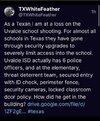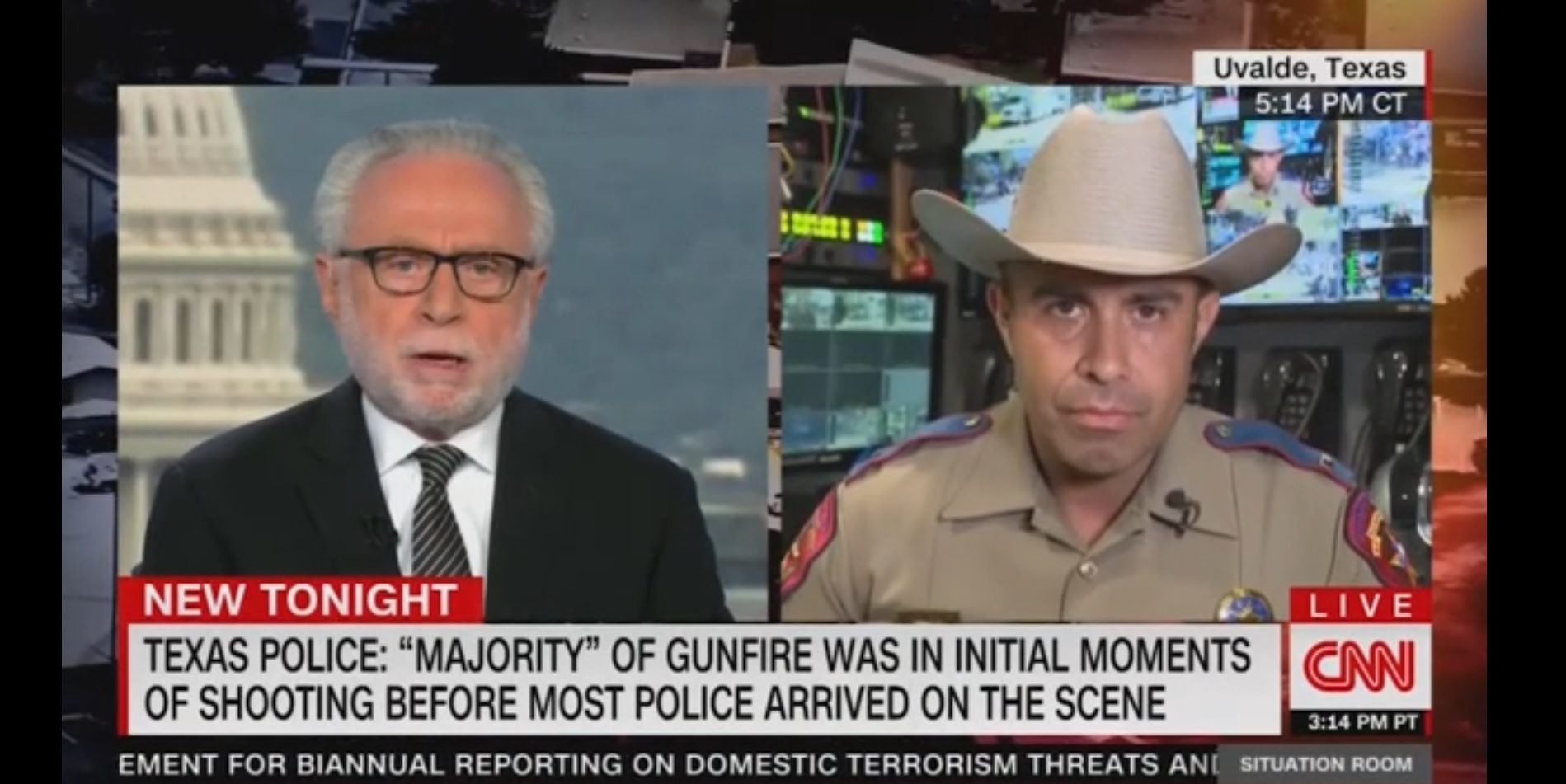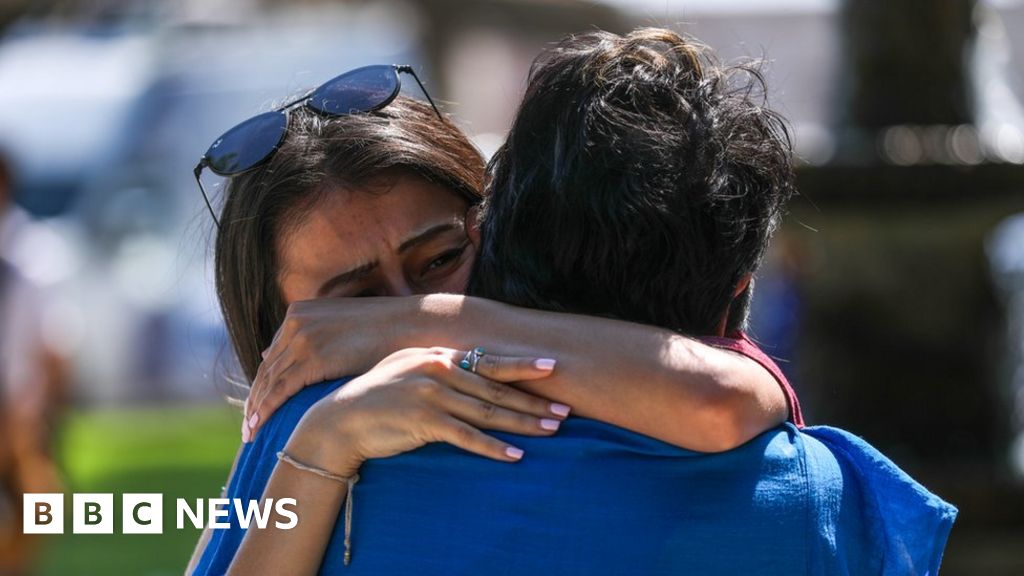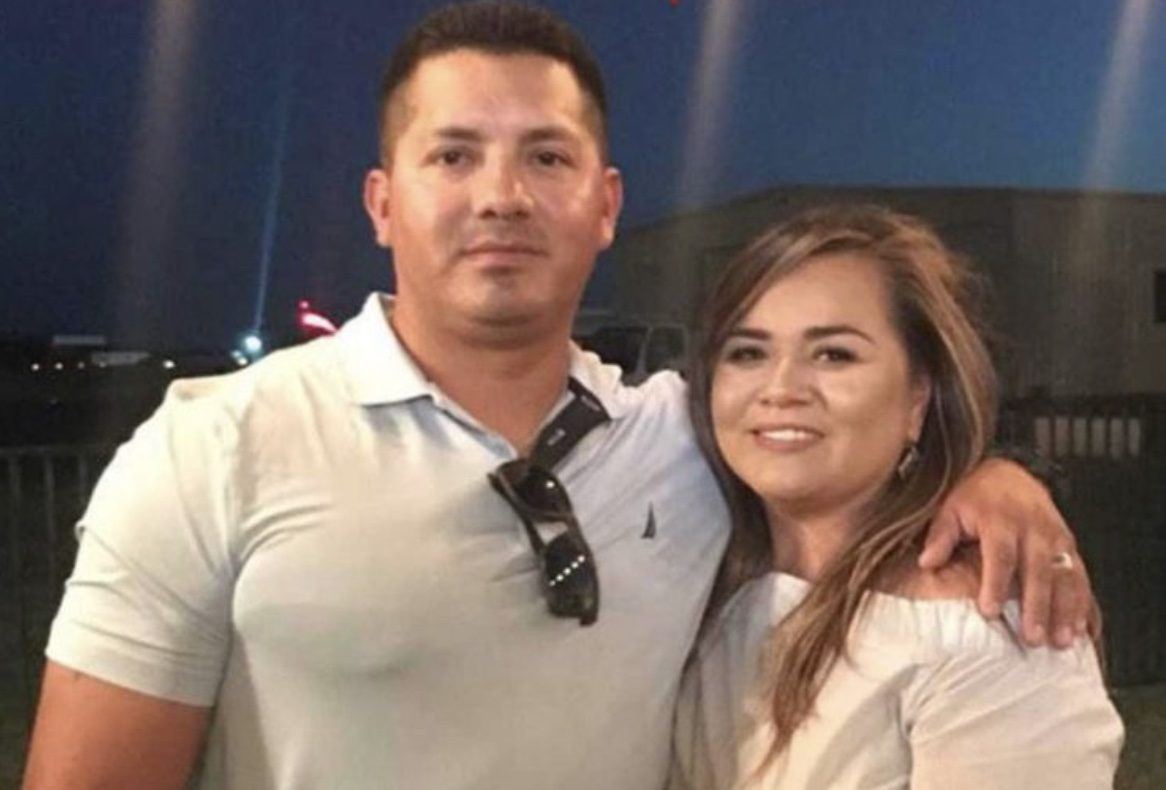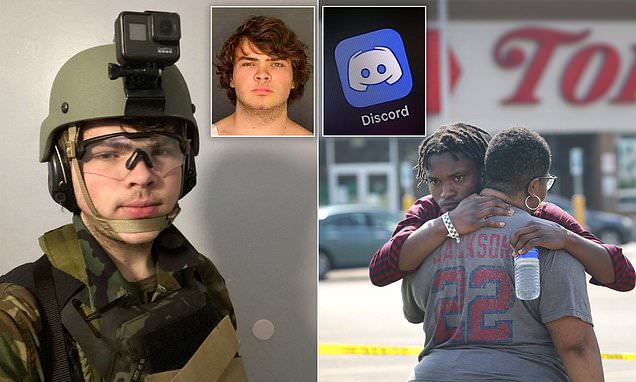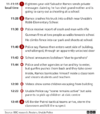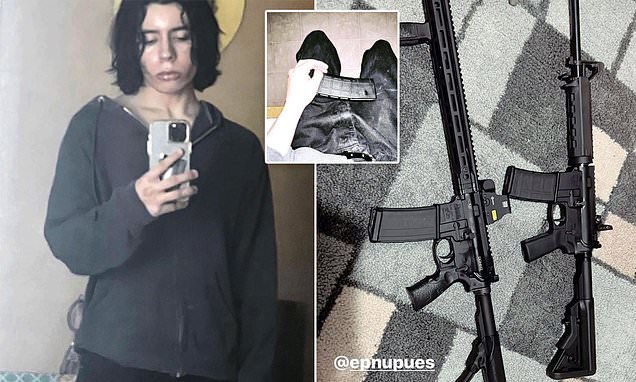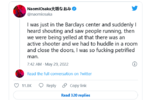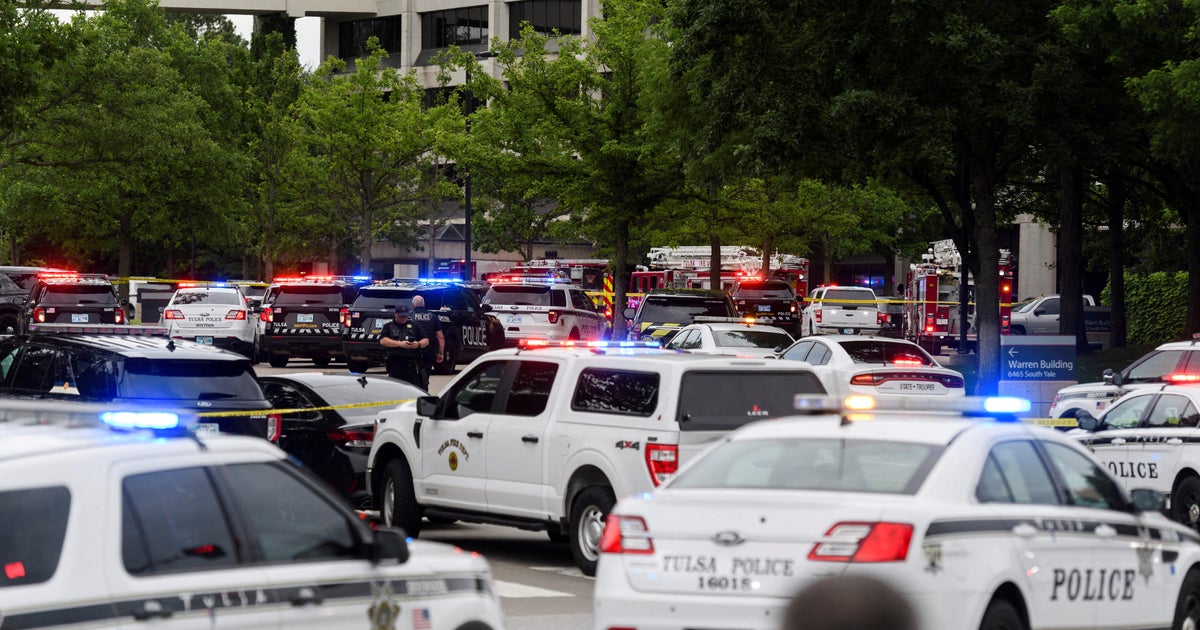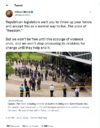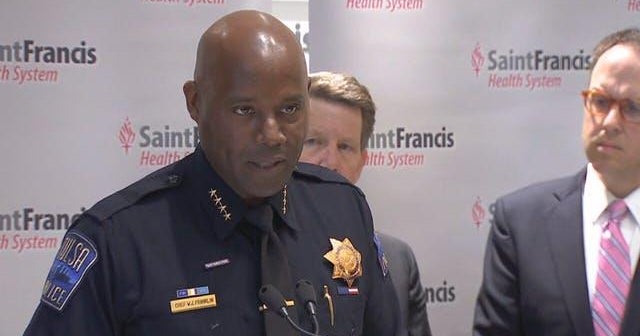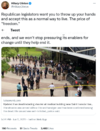Texas school officials had been monitoring students' social media prior to the deadly shooting in Uvalde Tuesday, it has been revealed - but still failed to pick up on concerning posts from the teenage gunman in the days leading up to the tragedy.
As an 18th birthday present to himself earlier this month, now-deceased suspect Salvador Ramos bought two AR-style rifles and paraded them on social media - including in ominous messages sent hours before the killing started.
The teen's photo-op also saw him share an image to his since-scrubbed Instagram account, of him cradling the magazine of a rifle on his lap.
The ensuing massacre - the deadliest at a US elementary school since the infamous 2012 Sandy Hook shooting - left 19 students aged under 11 and two adults at Uvalde Elementary dead. Ramos also reportedly shot his 66-year-old grandmother before embarking on the killing spree.
Now, Uvalde School officials say they had been monitoring its students' social media pages using an advanced AI-based service called Social Sentinel, designed to recognize signals of potential harm found in digital conversations.
The district revealed Monday it had been using the platform 'to monitor all social media with a connection to Uvalde as a measure to identify any possible threats that might be made against students and or staff within the school district.'
According to its creators, the service - powered by advanced linguistics technology - scans and analyzes digital content to pick out and flag potential safety and security risks, as well as mental health and social and emotional concerns.
The software scans selected digital content - in this case, thousands of students' social media accounts - and identifies language that fit those criteria.
What is Social Sentinel? The media tracking service that failed to spot Texas shooter's gun posts on Instagram
Social Sentinel is a linguistics technology service used by the Uvalde School District that tracks users' social media activity, flagging it if it finds the content to be concerning.
The company primarily analyzes profiles of students, and seek 'to improve school violence prevention and awareness' with the tech, which is used by districts across the country.
According to its creators, the service - powered by advanced linguistics technology - scans and analyzes digital content to pick out and flag potential safety and security risks, as well as mental health and social and emotional concerns.
The software scans selected digital content - in this case, thousands of students' social media accounts - and identifies language that fit those criteria.
The powerful tech is designed to then alerts leaders if a community member is showing signs of crisis, so they can intervene before an incident occurs.
The service scans threatening images, along with its associated text, before determining whether it is something community leaders should look into.
It is not immediately clear why the technology failed to flag gunman Salvador Ramos' posts, which contained photos of guns and ammo used in Tuesday's attack - the worst school shooting in a decade.
The powerful technology is designed to then alerts leaders if a community member is showing signs of crisis, so they can intervene before an incident occurs.
The service also scans threatening images, along with its associated text, before determining whether it is something community leaders should look into.
However, in this particular instance, the technology fell short - failing to spot Ramos' objectively concerning posts and notify district officials.
It is not immediately clear why the technology failed to flag Ramos' posts. DailyMail.com reached out to Social Sentinel and Uvalde district staffers for comment on the software's apparent failure Wednesday morning, but did not immediately hear back.
Students and parents also failed to spot the post from the troubled student, who was described as a bullied loner who slowly dropped out of school due to teasing about his lisp, habit of wearing eyeliner, clothes and his family's poverty
Uvalde district policy encourages 'students, parents, staff, and community members are encouraged to share information that is deemed troubling' with the district using a reporting system' so that it can 'take appropriate action.'
Those who knew Ramos or his relatives say he was a 'nice' but 'quiet' boy who grew increasingly violent as he became older, amid relentless bullying both in school and online.
Santos Valdez told the
Washington Post that he used to be friends with Ramos and played online shooter games such as Fortnite and Call of Duty with him, until the pair stopped talking as Ramos's behaviour 'deteriorated.'
Valdez said Ramos had showed up to the park one time with cuts all over his face, initially claiming he was scratched by a cat before admitting that he did it to himself with a knife.
Stephen Garcia, who considered himself Ramos’s best friend in eighth grade, said he was 'bullied by a lot of people' including for over a photo of himself wearing eyeliner which led to 'gay' taunts. Garcia said Ramos dropped out of school when he moved away to another part of the state, and the two had lost touch.
21 December 2012 And so much more considering the Signs of Our Times
